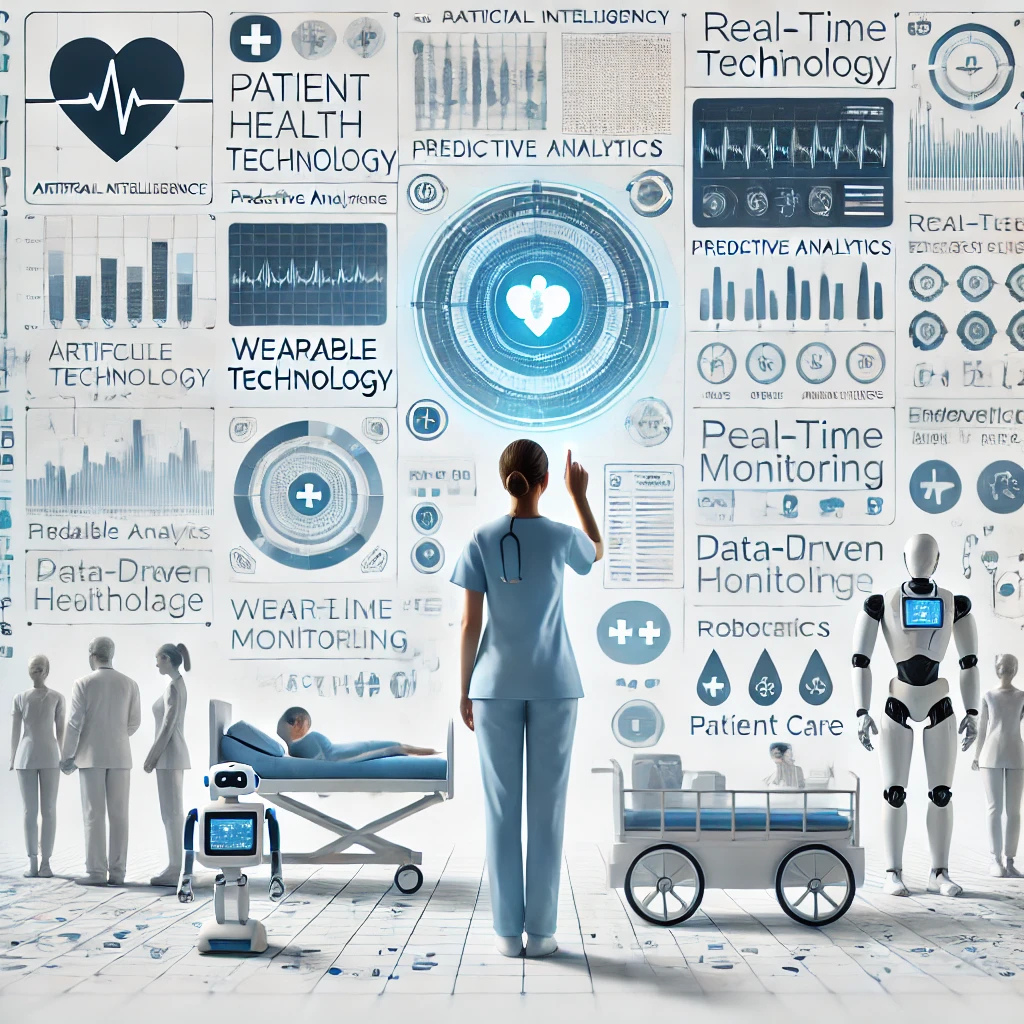The Future of Nursing: Emerging Technologies Transforming Patient Care
Introduction
Introduce the impact of technology in healthcare and nursing, highlighting that advances in technology are changing how nurses provide care. Emphasize that these technologies not only streamline routine tasks but also enhance patient outcomes and nurse-patient interactions, making healthcare more efficient and personalized.
Healthcare is evolving rapidly, with emerging technologies transforming how care is delivered. In nursing, these advancements are not only reshaping traditional practices but also improving patient care and nurse efficiency. From AI-powered diagnostics to wearable health monitors, technology is empowering nurses to deliver more personalized and effective care, setting the stage for a future where innovation and empathy go hand in hand.
Telehealth and Remote Patient Monitoring
Discuss how telehealth has become essential, allowing nurses to provide care remotely. Explain the benefits of remote patient monitoring (RPM), which enables nurses to track patient health data in real-time. This technology is especially beneficial for managing chronic illnesses, monitoring post-operative patients, and providing access to care for patients in remote locations.
Example:
Telehealth has become a game-changer in nursing, especially in rural and underserved areas. By using video consultations and remote monitoring tools, nurses can provide care to patients who might otherwise have limited access. Remote patient monitoring (RPM) devices allow nurses to track vital signs, monitor chronic conditions, and even detect early warning signs of complications, all in real-time (Leung, 2023). This technology enables timely interventions, reduces hospital readmissions, and empowers patients to take control of their health, making it a powerful tool for improving patient outcomes.

Artificial Intelligence and Data Analytics
Describe how AI is helping nurses by automating routine tasks, managing patient data, and even aiding in diagnostics. Mention how predictive analytics can alert nurses to potential issues with patients before they become critical, enabling proactive care. Explain how AI reduces administrative burden, allowing nurses to spend more time directly with patients.
Example:
Artificial intelligence (AI) and data analytics are transforming nursing by automating administrative tasks, managing data, and assisting with diagnostics. Predictive analytics can help nurses identify patients at risk of complications, enabling proactive interventions and better resource allocation (Papachristou et al., 2023).
Wearable Health Technology
Discuss how wearable health devices, like smartwatches and biosensors, help nurses monitor patients’ vital signs, activity levels, and more. Explain how these devices support preventative care, especially for patients with chronic conditions. Include examples like heart rate monitors, sleep trackers, and other biosensors that provide valuable real-time data.
Example:
Wearable health technology, such as smartwatches and biosensors, is becoming invaluable in nursing. These devices allow nurses to continuously monitor a patient’s heart rate, blood pressure, and even sleep patterns, providing data that supports early intervention. For patients with chronic conditions like diabetes or heart disease, wearable tech enables ongoing, real-time monitoring outside of clinical settings (Malwade et al., 2018). This technology empowers patients to take an active role in managing their health while providing nurses with accurate data that informs treatment and encourages preventative care.
Robotics and Automation in Nursing
Describe how robotics and automation assist nurses in routine tasks, such as medication dispensing, lifting and transporting patients, and even handling sanitation. Explain how these innovations reduce the physical demands on nurses, improve efficiency, and minimize errors in patient care.
Example:
Robotics and automation are revolutionizing nursing by handling physically demanding and repetitive tasks (Al Yami et al., 2022). Robots can now assist in lifting patients, delivering medication, and even maintaining sanitation in hospital settings (Cruz et al., 2024). This technology reduces the physical strain on nurses and minimizes human error, leading to safer patient care and increased efficiency.

Conclusion
Summarize the key technologies transforming nursing and emphasize that while technology enhances patient care, the role of compassionate, skilled nurses remains irreplaceable. Highlight that as technology advances, nurses will need to adapt, upskill, and work alongside these innovations to provide the best care.
Emerging technologies like telehealth, AI, wearables, and robotics are transforming nursing by enhancing patient care, improving efficiency, and reducing physical demands. However, these advancements don’t replace the invaluable role of compassionate nurses; they complement it. As the future of healthcare unfolds, nurses will continue to be at the forefront, integrating these innovations into practice to create a healthcare system that is both technologically advanced and deeply humane. Embracing these changes will allow nurses to provide higher-quality, more personalized care, ensuring that patients receive the best of both worlds.
References